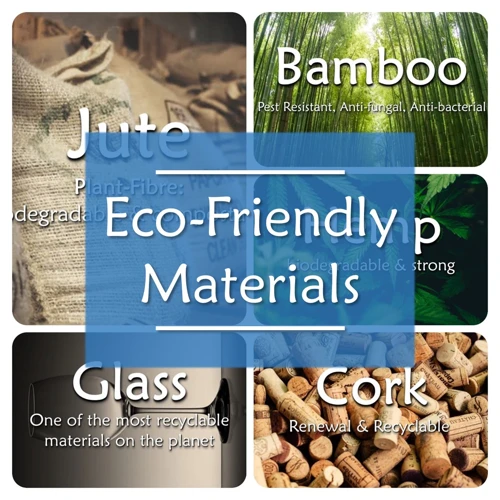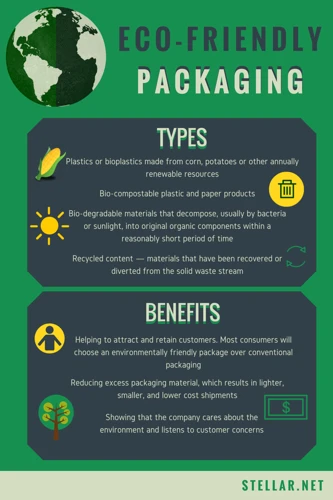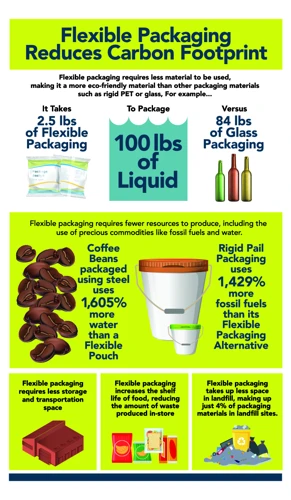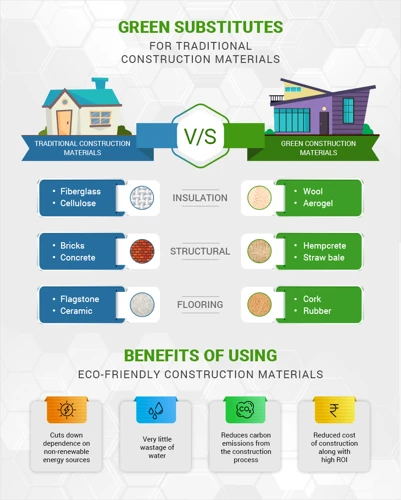Imagine walking into a department store and being faced with the choice between a product made from a material that’s environmentally-friendly, and one that’s not. Which would you choose? If you’re like most people, you’d probably go for the eco-friendly option, but what exactly makes a material “eco-friendly”? It’s a question that’s becoming increasingly important, as we strive to reduce our impact on the planet. In this article, we’ll explore what makes a material eco-friendly, why you should choose eco-friendly materials, how to choose them, and highlight some examples of eco-friendly materials that are becoming more and more popular.
What is an Eco-Friendly Material?

When it comes to living sustainably, using eco-friendly materials is an important part of the equation. But what exactly makes a material “eco-friendly”? The answer lies in several factors that determine whether a material is truly environmentally responsible. From renewable sourcing to low environmental impact, materials that meet specific criteria can make a big difference in reducing our carbon footprint. In this section, we’ll explore the key characteristics of eco-friendly materials and why they matter. To learn more about how eco-friendly materials can be used in everyday life, you can check out our article on the top 5 eco-friendly materials for vacuum cleaners.
Renewable and Sustainable
Materials that are renewable and sustainable are some of the key aspects that make a material eco-friendly. These materials have the ability to regenerate and replenish themselves naturally, ensuring that they are always available for future generations to use. In addition to that, these materials are produced in a sustainable way, without depleting finite resources or causing long-lasting damage to the environment.
Renewable materials are those that can be easily grown, harvested, and replenished over a relatively short period. Examples of renewable materials include bamboo, cork, and organic cotton. These materials are often grown without the use of harmful pesticides or fertilizers, making them safe for the environment and humans.
Sustainable materials, on the other hand, are those that are produced without causing long-lasting damage to the environment. This means that they are produced through processes that do not deplete finite resources or cause significant pollution. Examples of sustainable materials include natural stone, recycled plastic, and reclaimed wood.
In choosing renewable and sustainable materials, it is important to look for materials that have a minimal impact on the environment. This includes materials that are grown or produced using eco-friendly methods and that are free from harmful chemicals or substances that can harm the environment. Additionally, it is important to consider the entire lifecycle of the product, from initial production to eventual disposal or recycling.
For example, some materials may be renewable and sustainable, but may not be easily recyclable or biodegradable at the end of their life cycle. Researching a material’s entire lifecycle is therefore crucial in determining its overall environmental impact.
Choosing eco-friendly materials that are both renewable and sustainable not only helps to protect the environment and reduce waste, but also ensures that these resources will be available for many years to come.
Internal link: future eco materials vacuum cleaner
Low Environmental Impact
When it comes to choosing eco-friendly materials, it’s important to consider the low environmental impact of the materials you’re working with. Essentially, materials with low environmental impact are those that are less harmful to the environment during the production, use, and disposal phases of their lifecycle.
One way to determine the environmental impact of a material is to look at its carbon footprint. This refers to the amount of greenhouse gases that are emitted throughout the material’s lifecycle, from the extraction of raw materials to the disposal of the finished product. Materials with a low carbon footprint are generally considered to be more eco-friendly.
Another factor to consider is the water usage associated with the production of a material. Some materials require a significant amount of water to be produced, which can have a negative impact on the environment, particularly in areas with water scarcity. Choosing materials that require less water can help reduce your environmental footprint.
You can also look at the energy efficiency of the production process. Materials that require less energy to produce are generally considered to be more eco-friendly than those that require a significant amount of energy.
To help you choose low impact materials, here’s a table that outlines the environmental impact of a few different materials:
| Material | Carbon Footprint | Water Usage | Energy Efficiency |
|---|---|---|---|
| Bamboo | Low | Low | High |
| Recycled Glass | Low | Low | High |
| Organic Cotton | Low | High | Low |
| Reclaimed Wood | Low | Low | Medium |
By choosing materials with a low environmental impact, you can reduce your carbon footprint and do your part to protect the planet. For more information on how to choose eco-friendly materials, check out our article on eco-friendly vacuum cleaners or our comparison of bio-plastics vs. traditional plastics.
Recyclable and Biodegradable
When it comes to eco-friendly materials, recyclability and biodegradability are two of the most important factors to consider. Recyclable materials are those that can be broken down and reused in the manufacturing process, reducing the environmental impact of producing new materials. Biodegradable materials, on the other hand, are those that can be broken down into their natural components by bacteria, fungi, and other living organisms. This not only reduces waste, but also reduces the amount of pollution that can result from the decomposition of non-biodegradable materials.
It’s important to note that not all recyclable materials are biodegradable, and not all biodegradable materials are recyclable. However, the best eco-friendly materials are those that are both recyclable and biodegradable.
Here is a table highlighting some examples of materials that are both recyclable and biodegradable:
| Material | Recyclable? | Biodegradable? |
|---|---|---|
| Bamboo | Yes | Yes |
| Cork | Yes | Yes |
| Organic Cotton | Yes | Yes |
| Reclaimed Wood | Yes | Yes |
| Recycled Plastic | Yes | No |
| Wool | No* | Yes |
*Note: While wool is not technically recyclable, it is biodegradable and can be composted at the end of its life cycle.
Choosing materials that are both recyclable and biodegradable can have a significant positive impact on the environment. These materials can be broken down and reused or returned to the earth without causing harm, reducing the amount of waste that ends up in landfills or oceans.
If you’re interested in learning more about eco-friendly products, check out our article on eco-friendly vacuum cleaners, the benefits of recycling and upcycling, and whether biodegradable vacuum bags are worth the investment.
Free from Toxic Chemicals
When choosing eco-friendly materials, it is important to consider whether they are free from harmful chemicals. The use of toxic chemicals in manufacturing can have a detrimental effect on both human health and the environment. It is essential to select materials that are free from such chemicals.
To ensure that a material is free from toxic chemicals, it is important to review the product label and research the manufacturing process. Look for certifications and labels such as the OEKO-TEX Standard 100 or the Global Organic Textile Standard (GOTS), which indicate that the materials have been tested and verified to be free from harmful chemicals.
Below is a table listing some common toxic chemicals found in materials:
| Toxic Chemicals | Effects on Health | Materials Found In |
|---|---|---|
| Lead | Brain damage, developmental delays, anemia | Paint, electronics, batteries, plumbing materials |
| Mercury | Nerve damage, cognitive impairment, birth defects | Electronics, light bulbs, dental fillings, thermometers |
| Phthalates | Hormone disruption, birth defects, reproductive issues | Plastic products, vinyl flooring, food packaging |
| Formaldehyde | Cancer, respiratory issues, skin irritation | Furniture, flooring, adhesives, clothing |
| Chlorofluorocarbons (CFCs) | Deterioration of the ozone layer, cancer | Refrigerants, foam insulation, aerosols |
By choosing materials that are free from toxic chemicals, you can help protect both your health and the environment. When purchasing products, look for labels and certifications that verify the absence of harmful chemicals. This simple step can go a long way towards promoting a healthier and more sustainable future.
Why Choose Eco-Friendly Materials?

In today’s world, where pollution and waste are rampant, it has become more important than ever to choose products that have a lesser impact on the environment. By opting for eco-friendly materials, you not only protect the planet but also safeguard your own well-being. So, let’s take a closer look at why it’s essential to choose eco-friendly materials.
Protect the Environment
When considering eco-friendly materials, one of the primary benefits is the positive impact they can have on the environment. By choosing products made from sustainable or renewable sources, you can help reduce the strain on natural resources and protect the Earth for future generations. Here are some ways in which eco-friendly materials help protect the environment:
- Reducing carbon emissions: Many eco-friendly materials are produced through manufacturing processes that emit lower levels of greenhouse gases than traditional materials. For example, bamboo plants can absorb up to 12 tons of carbon dioxide per hectare, making them an excellent material for reducing carbon emissions.
- Preserving natural habitats: When materials are produced in a sustainable way, it can help preserve the habitats of animals and plants that might otherwise be threatened. For example, traditional cotton farming can require large amounts of water and pesticides, which can pollute local ecosystems. Organic cotton, on the other hand, is grown without harmful chemicals and uses less water, reducing the impact on local habitats.
- Minimizing waste: Eco-friendly materials are often biodegradable or recyclable, meaning they can be broken down naturally without harming the environment. Materials such as bamboo, cork, and reclaimed wood can be composted or recycled, rather than ending up in a landfill.
By choosing eco-friendly materials, you can make a positive impact on the environment and help reduce your carbon footprint. Additionally, many eco-friendly materials are produced in ways that promote fair labor practices and support local communities. All of these factors add up to a more sustainable and just world for everyone.
Protect Your Health
One important reason to choose eco-friendly materials is to protect your health. Many conventional materials used in manufacturing can emit toxic chemicals which can have negative impacts on human health. For example, some paints, varnishes, and adhesives contain volatile organic compounds (VOCs) that can cause respiratory problems and even cancer. Similarly, some pesticides and fertilizers used in conventional cotton farming have been linked to health issues such as cancer, hormonal disruption, and developmental delays in children.
By choosing eco-friendly materials that are free from harmful chemicals, you can reduce your exposure to these health risks. Organic cotton, for example, is grown without the use of synthetic pesticides and fertilizers, reducing your exposure to these chemicals. Similarly, low-VOC paints and adhesives emit fewer harmful chemicals, reducing your exposure to respiratory irritants.
Other factors that can impact your health include the use of synthetic fibers and materials that can cause skin irritation or allergies. Eco-friendly materials such as bamboo, cork, and wool can be great alternatives to synthetic materials, as they are naturally hypoallergenic and anti-microbial.
Choosing eco-friendly materials can have a big impact on protecting your health and reducing your exposure to harmful chemicals and materials. By doing so, you can support a healthier lifestyle for yourself and your family.
Reduce Your Environmental Footprint
Reducing your environmental footprint is crucial in preserving our planet for future generations. By choosing eco-friendly materials, you can significantly reduce your impact on the environment. Here are some ways you can reduce your footprint:
- Choose products with minimal packaging: Excessive packaging contributes to environmental waste. When purchasing products, choose those with minimal or no packaging. Consider purchasing products in bulk to reduce packaging waste.
- Avoid single-use plastics: Single-use plastics, such as straws, plastic bags, and water bottles, contribute to landfills and ocean pollution. Instead, use reusable alternatives, such as metal straws, cloth bags, and refillable water bottles.
- Buy products made from recycled materials: When you buy products made from recycled materials, you support the recycling industry and reduce the amount of waste in landfills.
- Conserve water: Water is a precious resource, and conserving it can significantly reduce your environmental impact. You can reduce water usage by fixing leaks, taking shorter showers, and using drought-resistant plants in your landscaping.
- Reduce energy usage: Energy usage is a major contributor to greenhouse gas emissions. You can reduce your energy usage by turning off lights and electronics when you’re not using them, using energy-efficient appliances, and adjusting your thermostat to conserve energy.
By making these changes, you can reduce your environmental impact and contribute to a healthier planet. Choosing eco-friendly materials and reducing your environmental footprint is a small but significant step in protecting our environment for future generations.
How to Choose Eco-Friendly Materials

When it comes to choosing eco-friendly materials, the process can be overwhelming. Where do you start? What do you look for? Fortunately, with a bit of research and consideration, you can make choices that benefit the environment and your health. So, how do you choose eco-friendly materials? Let’s take a look at some key factors to take into account.
Research the Material
Before choosing any material for a project, it is important to research and understand the materials available. This will help you make informed decisions while keeping the eco-friendly aspect in mind. Here are a few things to keep in mind while researching eco-friendly materials:
| Factor | What to consider |
|---|---|
| Renewability | Check if the material is sourced from sustainable sources |
| Production | Find out the manufacturing process and the environmental impact it has |
| Transportation | Consider the distance the material needs to travel to reach your location, and the carbon footprint associated with it |
| Longevity | Determine how long the material will last and if it will require frequent replacement |
| Recyclability | Check if the material can be recycled or reused at the end of its life cycle |
| Cost | Consider the cost-effectiveness of the eco-friendly material in comparison to conventional options |
Keeping these factors in mind while researching eco-friendly materials will help you make an informed decision. It will also ensure that the material you choose aligns with your values while minimizing the impact on the environment.
Consider the Manufacturing Process
When choosing eco-friendly materials, it is important to not only consider the properties of the material itself, but also the manufacturing process it undergoes. The manufacturing process can have a significant impact on the environment and on the sustainability of the material.
Here are some factors to consider when evaluating the manufacturing process:
| Factor | Explanation |
|---|---|
| Energy consumption | Look for materials that require less energy to manufacture. This can often be determined by researching the production process and energy usage data. |
| Water usage | Some production processes require a lot of water, which can strain local resources. Choose materials that require minimal amounts of water to manufacture. |
| Chemical usage | Many manufacturing processes involve the use of harmful chemicals, which can be damaging to the environment and hazardous to workers. Look for materials that are produced using non-toxic or low-toxicity chemicals. |
| Waste management | Consider how the manufacturing process handles waste, both in terms of solid waste and emissions. Look for materials that produce minimal waste or that have a plan in place for managing waste. |
| Transportation | Materials that are shipped long distances have a higher carbon footprint. Look for materials that are produced locally or that require minimal transportation to reach their destination. |
By taking into account these manufacturing factors, you can make a more informed decision about the environmental impact of the materials you choose. Remember, the goal is to minimize the overall impact on the environment and promote sustainability for future generations.
Look for Certifications and Labels
When searching for eco-friendly materials, it can be helpful to look for certifications and labels that indicate a product’s sustainability and environmental impact. Here are some important certification bodies to keep in mind:
- The Forest Stewardship Council (FSC): This certification ensures that the wood or paper product comes from a responsibly managed forest. FSC works to protect biodiversity, indigenous people’s rights, and the well-being of forest workers.
- The Global Organic Textile Standard (GOTS): This certification applies to textiles and ensures that the product is at least 70% organic, does not contain certain harmful chemicals, and meets social criteria related to worker safety and wages.
- The Cradle to Cradle Certified Program: This certification evaluates a product’s sustainability across its entire lifecycle, including the use of safe and renewable materials, ethical production practices, and recyclability.
- The Energy Star Label: This label is given to energy-efficient products that meet certain standards set by the U.S. Environmental Protection Agency (EPA). Look for the Energy Star label on appliances, electronics, and lighting fixtures.
- The Rainforest Alliance Certification Program: This certification identifies products that come from farms that meet rigorous environmental, social, and economic standards. Look for the Rainforest Alliance Certified seal on products such as coffee, tea, cocoa, and bananas.
It’s important to keep in mind that not all certifications are created equal. Some have more rigorous standards than others, and some may be subject to conflicts of interest. Be sure to research the certification body as well as the product itself. Additionally, not all eco-friendly products will have a certification or label. It’s always a good idea to research a product’s environmental impact and read reviews from other consumers before making a purchase.
Choose Local and Sustainable
When choosing eco-friendly materials, it’s important to consider the distance that these materials have traveled. Choosing local materials reduces transportation emissions and supports the local economy. Additionally, look for materials that are sustainably sourced, which means that they can be replenished quickly enough to meet demand without harming the environment.
A great way to determine the sustainability of materials is to look for certifications and labels. For example, the Forest Stewardship Council (FSC) is an international organization that promotes responsible forest management, and its certification tells consumers that the wood they are using comes from a well-managed forest. Other certifications to watch out for include the Cradle to Cradle Certified Products Program, the GreenGuard certification, and the USDA Organic certification.
Here’s a comparison table that can help you choose between local and non-local options:
| Material | Local Option | Non-Local Option | Environmental Impact |
|---|---|---|---|
| Bamboo | Grown and harvested locally | Imported from Asia | Low transportation emissions |
| Reclaimed Wood | Salvaged from local constructions sites | Imported from other regions or countries | Decreases waste in landfills |
| Cotton | Organic and locally grown | Non-organic and imported | Reduces pesticide use and transportation emissions |
Although some non-local options may be sustainably sourced, the additional transportation emissions could negate the eco-friendly benefits of using them. By choosing local and sustainable materials, you can reduce your carbon footprint and support environmentally responsible practices.
Reduce, Reuse, and Recycle
When it comes to choosing eco-friendly materials, it’s important to not only consider the material itself but also how it is used and disposed of. One important aspect of sustainable living is practicing the 3 R’s – Reduce, Reuse, and Recycle. Let’s take a closer look at what each of these R’s entails.
| Reduce | Reuse | Recycle |
|---|---|---|
| Reducing consumption is one of the easiest and most effective ways to live a more eco-friendly lifestyle. By simply reducing the amount of material goods we consume, we can help reduce the demand for materials, thereby reducing the negative impact of industrial production on the environment. | Reusing products or materials is another important way to help reduce waste. For instance, rather than buying disposable plastic bottles or coffee cups, consider investing in a reusable water bottle or travel mug. | Recycling is a great way to help divert reusable materials from the landfill. Many materials such as glass, aluminum, plastic, and paper can be easily recycled and given a new lease on life. Additionally, opting for products made from recycled materials can help further reduce the overall demand for new materials. |
By applying the 3 R’s to our daily lives, we can greatly reduce our environmental footprint and help create a more sustainable future. And when it comes to choosing eco-friendly materials, considering how we can reduce, reuse, and recycle those materials is a crucial part of the decision-making process.
Examples of Eco-Friendly Materials
When it comes to creating a more sustainable and eco-friendly future, using materials that are environmentally conscious is crucial. There are a variety of options available that can have a positive impact on the planet without sacrificing quality or style. In this section, we will explore some of the most popular and innovative eco-friendly materials available, highlighting their unique properties and benefits.
Bamboo
Bamboo is an eco-friendly material that has gained popularity in recent years due to its exceptional properties. It is a renewable and fast-growing resource, making it highly sustainable. Unlike hardwood trees that can take decades to mature, bamboo can be harvested within three to five years of planting. This means that bamboo can be replenished quickly, making it a highly renewable resource that can be used in various applications.
Benefits of bamboo:
- Bamboo is highly durable and strong, making it an excellent choice for furniture and flooring.
- It has natural anti-bacterial and anti-fungal properties.
- Bamboo is highly resistant to moisture, making it an excellent choice for kitchens and bathrooms.
- It is a highly sustainable and renewable resource that can be used in various applications.
- Bamboo is biodegradable, meaning that it can decompose naturally without leaving any harmful residue behind.
In addition to its environmental benefits, bamboo is also an aesthetically pleasing material that can add a touch of elegance to any space. It is available in various colors, ranging from natural light hues to darker shades, which can easily match any decor.
Applications of bamboo:
- Bamboo can be used for flooring, wall cladding, and ceiling panels.
- It is an excellent choice for furniture, such as chairs, tables, and cabinets.
- Bamboo is suitable for kitchen and bathroom accessories, such as cutting boards, utensils, and bath mat.
- It can also be used in textile and clothing applications, such as towels, sheets, and clothing.
Bamboo is an excellent eco-friendly material that offers many benefits. From its sustainability to its natural beauty, bamboo is a versatile material that can be used in a wide range of applications. When choosing materials for your next project, consider using bamboo to create a stylish and eco-friendly space.
Cork
Cork is a highly sustainable material that is harvested from the bark of cork oak trees. This material is an eco-friendly alternative to traditional hardwoods because it is renewable and biodegradable. Here are some reasons why cork is an excellent option for eco-conscious consumers:
- Renewable: Cork is harvested from the bark of cork oak trees, which means it can be harvested without harming the tree. In fact, cork oak trees actually benefit from being harvested because it allows them to grow thicker bark, which makes them more resistant to forest fires and other threats.
- Biodegradable: Cork is a natural material that will decompose over time, unlike synthetic materials that can end up sitting in landfills for centuries. When cork is disposed of, it will break down into organic matter and return to the earth.
- Durable: Cork is a tough and resilient material that can withstand a lot of wear and tear. It is also water-resistant and hypoallergenic, making it a great option for flooring and other household applications.
- Easy to maintain: Cork is easy to clean and maintain, requiring only mild soap and water to keep it looking new. It is also naturally resistant to mold, mildew, and bacteria.
The production process of cork is relatively low impact, with most of the harvesting and processing taking place by hand. Cork is also recyclable, which means it can be repurposed or recycled into new products.
All in all, cork is an excellent eco-friendly material that offers a range of benefits to both consumers and the environment. Its durability, natural properties, and low impact production process make it a sustainable choice for a variety of applications, from flooring to furniture to wine stoppers.
Recycled Glass
Recycled glass is a great eco-friendly material that is becoming increasingly popular in the construction industry. Glass has properties that make it ideal for recycling and repurposing. Here are some reasons why recycled glass is considered an eco-friendly material:
- Reduces Waste: When you use recycled glass, you are reducing the amount of waste that ends up in landfills. Glass is not biodegradable, meaning it can take up to a million years to decompose. By recycling glass, we are reducing the amount of waste that we produce and disposing of it properly.
- Low-Carbon Footprint: The manufacturing process for recycled glass uses less energy and creates fewer emissions. This cuts down on the carbon footprint of the material, making it eco-friendly.
- Does Not Degrade: Glass does not degrade over time, so it can be recycled infinitely without losing quality or purity.
- Wide Range of Uses: Recycled glass can be used in a variety of ways, including as a replacement for traditional construction materials such as concrete or as an additive in asphalt for road repair.
Recycled glass is also a durable material that is resistant to water, chemicals, and UV light, making it ideal for outdoor use. It has a unique aesthetic appeal and can be used as a decorative element in landscaping or building design.
To ensure that the recycled glass you are using is truly eco-friendly, look for materials with the proper certifications and labels. The recycled glass should be processed in a way that minimizes its impact on the environment and meets industry standards.
Organic Cotton
Organic cotton is a type of cotton that is grown without the use of harmful pesticides or fertilizers. It is a natural and sustainable option, making it an eco-friendly choice for clothing, bedding, and other textiles. Here are some key characteristics of organic cotton that make it an excellent choice for consumers who want to reduce their environmental impact:
- Reduced Chemical Exposure: Organic cotton eliminates the use of toxic chemicals such as pesticides and fertilizers that can be harmful to farmers, their families, and the environment. By choosing organic cotton products, you can reduce your exposure to these chemicals.
- Sustainable Farming Practices: Organic cotton is grown using sustainable farming practices that help conserve water, reduce soil erosion, and promote biodiversity. This makes it a more sustainable option than conventionally grown cotton.
- Higher Quality: Organic cotton is known for being softer, more breathable, and more durable than conventional cotton. This is because it is grown without the use of chemicals that can damage the fibers and reduce their quality.
- Fair Trade: Many organic cotton farmers are also members of fair trade cooperatives, which means they receive fair compensation for their hard work. Choosing organic cotton that is also fair trade helps support sustainable and ethical farming practices.
Choosing organic cotton is a great way to reduce your environmental impact and promote sustainable farming practices. By choosing products made from organic cotton, you can enjoy a higher quality product while also supporting farmers and protecting the environment.
Reclaimed Wood
Reclaimed wood is an eco-friendly material that has gained popularity in recent years thanks to its numerous benefits. Reclaimed wood is wood that has been salvaged from old buildings, barns, factories, or other structures that have been dismantled. This wood is then cleaned, processed, and re-milled to give it a new life as a building material.
Benefits of Reclaimed Wood
Using reclaimed wood has numerous benefits, both for the environment and for your wallet. Here are some of the key benefits of choosing reclaimed wood:
- Environmental Benefits: Reclaimed wood reduces the need for new trees to be harvested, which helps preserve forests and reduce deforestation. It also reduces the amount of wood waste that ends up in landfills, which helps reduce greenhouse gas emissions.
- Character and Beauty: Reclaimed wood has a unique character and beauty that cannot be replicated by new wood. The wood has already been aged and weathered, giving it a unique texture and patina that cannot be replicated artificially.
- Strength and Durability: Reclaimed wood is often stronger and more durable than new wood because it has had time to dry and age properly. It has also survived exposure to the elements, making it more resilient to wear and tear.
- Cost Savings: Because reclaimed wood is salvaged from old structures and has already been processed, it is often less expensive than new wood. Additionally, it can add value to your home or building when used as a decorative element.
Considerations When Using Reclaimed Wood
While using reclaimed wood has many benefits, there are some considerations to keep in mind. Here are a few things to think about when using reclaimed wood:
- Quality: When selecting reclaimed wood, it’s important to inspect it carefully to ensure that it is of good quality and free from defects such as rot or insect damage.
- Treatment: Some reclaimed wood may have been treated with chemicals such as lead-based paint or creosote. It’s important to properly handle and treat the wood to ensure it is safe for use in your home or building.
- Availability: Since reclaimed wood is a finite resource, it can sometimes be difficult to find enough of it for a large project. It’s important to plan accordingly and be flexible with your design choices.
Conclusion
Reclaimed wood is an eco-friendly, beautiful, and cost-effective building material that offers numerous benefits compared to new wood. By carefully considering the quality, treatment, and availability of the wood, you can ensure that you are using reclaimed wood in a responsible and safe way.
Natural Stone
When it comes to eco-friendly building materials, natural stone is an excellent choice. Not only is it durable, versatile, and aesthetically pleasing, but it is also a sustainable choice. Let’s take a closer look at what makes natural stone an eco-friendly option.
Renewable and Sustainable: Natural stone is a renewable material since it comes from quarries in the earth’s crust. Additionally, it is a sustainable material since quarries extracted less than the annual growth, and the land can recover from the quarrying process. This allows for continuous supply without depleting resources and damaging the environment.
Low Environmental Impact: The extraction of natural stones requires little energy, and the maintenance is also low. It doesn’t contain any harmful chemicals or require much treatment for maintenance, making it an ideal choice for those concerned about the environment.
Recyclable and Biodegradable: Natural stone can be easily reused or recycled, making it a popular option in green architecture. It’s also biodegradable, which means it can quickly decompose and integrate back into nature if disposed of correctly.
Free from Toxic Chemicals: Natural stone is free from toxic chemicals, such as formaldehyde, which is often present in other building materials. It doesn’t emit volatile organic compounds (VOCs), which can harm a person’s health and contribute to air pollution.
If you’re looking for a sustainable building material that is also timeless and luxurious, natural stone is a great option to consider. Some examples of natural stones include granite, marble, limestone, and slate. Each type of natural stone has its own unique properties, so it’s essential to research the material, its origin and processing, and the impact of the extraction process. By making informed decisions, you can minimize the environmental impact and promote sustainability while enjoying the beauty and durability of natural stone.
| Pros | Cons |
|---|---|
| Natural beauty and uniqueness | Can be heavy and hard to handle |
| Durable and long-lasting | Can be expensive |
| Non-toxic and low maintenance requirements | Requires specialized installation |
| Easy to clean and maintain | May have limited color options compared to other materials |
Low-VOC Paint
When it comes to painting a room or furniture, choosing a low-VOC (volatile organic compounds) paint is an eco-friendly option that also benefits your health. VOCs are harmful chemicals that are released into the air during the painting process, contributing to indoor air pollution and causing health issues such as headaches, dizziness, and respiratory problems. Low-VOC paints, on the other hand, have lower levels of these harmful chemicals, making them a safer and more eco-friendly option.
Benefits of Low-VOC Paint:
- Reduced air pollution: Choosing low-VOC paint can reduce the amount of harmful chemicals released into the air during the painting process, contributing to better indoor air quality and reduced outdoor air pollution.
- Health benefits: Low-VOC paint is a safer option for you and your family, greatly reducing the risk of respiratory issues and other health problems commonly associated with traditional paints.
- Eco-friendly option: Low-VOC paint reduces your environmental footprint and contributes to a healthier planet by reducing the amount of harmful chemicals released into the environment.
- Durability: Low-VOC paint can be just as durable and long-lasting as traditional paint, meaning you don’t need to sacrifice quality for the sake of the environment and your health.
Tips for Using Low-VOC Paint:
- Make sure to properly ventilate the area you are painting in, opening windows and using fans to ensure optimal air flow and reduce the amount of fumes in the air.
- Use a low-VOC primer before applying low-VOC paint to ensure the best results, as traditional paint and primer may not adhere properly to the low-VOC paint.
- Consider working with a trained professional who can help you choose the best low-VOC paint for your specific needs and provide expert guidance in the painting process.
Low-VOC paint is a great choice for those looking for an eco-friendly, safe, and durable option when it comes to painting. With its many benefits and wide availability, it’s a great way to reduce your environmental footprint and create a healthier living space for both you and the planet.
Recycled Plastic
Recycling plastic is an essential way of minimizing our environmental impact. However, it is not just enough to recycle plastic. We should also consider the use of recycled plastic in making new products. Here are some reasons why recycled plastic is an eco-friendly material:
- Reduces Waste: Recycling plastic reduces waste by preventing the accumulation of single-use plastics in landfills and the environment. By using recycled plastic to make new products, we reduce the demand for virgin plastic production and decrease the amount of plastic waste that ends up in oceans and landfills.
- Energy-efficient: The process of using recycled plastic in production consumes less energy than the process of creating new plastic. This reduces the amount of energy used, leading to lower carbon emissions.
- Durable: Recycled plastic can be durable and long-lasting. It can be used to make a range of products from toys, furniture, and outdoor furniture to industrial and commercial products. It also has a lower chance of breaking down into microplastics when compared with virgin plastic.
- Cost-effective: Using recycled plastic in making new products can be less expensive than using new plastic. This is because recycled plastic is cheaper to produce and can be sourced from a wide variety of sources.
When choosing recycled plastic products, look for products made from post-consumer recycled content. These products are made using plastic waste from consumer products like water bottles, packaging materials, and straws that would otherwise end up in landfills. Also, consider products that are certified under the Global Recycling Standard or the United States Green Building Council’s Leadership in Energy and Environmental Design (LEED) certification. These certifications indicate that the manufacturer has met certain environmental and sustainability standards.
Wool
Wool is a natural fiber that has been used for clothing and textiles for thousands of years. It is a renewable resource that comes from sheep, goats, and other animals.
| Renewable/Sustainable | Wool is renewable and sustainable because it comes from sheep, which can be shorn annually. This means that wool is a rapidly renewable resource that can be easily replenished. |
| Low Environmental Impact | Wool production has a relatively low environmental impact compared to other textiles. Sheep require little water and their grazing can actually help to maintain healthy ecosystems. However, conventional wool production can involve the use of pesticides and other chemicals. |
| Recyclable/Biodegradable | Wool is biodegradable and can be easily recycled. When it is no longer suitable for clothing or textiles, it can be composted or used as insulation. |
| Free from Toxic Chemicals | Wool is naturally flame-retardant, which means that it doesn’t require the use of additional chemicals. Additionally, many organic wool producers use sustainable farming practices and avoid the use of harmful chemicals in their production processes. |
Aside from its eco-friendliness, wool also has many benefits for consumers. It is naturally insulating, which means it can keep you warm in the winter and cool in the summer. It is also durable and long-lasting, making it a great investment for your wardrobe. Finally, wool is versatile and can be used for everything from clothing to bedding to rugs.
Wool is an excellent eco-friendly material choice for those who are looking for an all-natural, sustainable, and long-lasting option. When choosing wool products, look for those that are sustainably sourced and avoid those that have been treated with harmful chemicals.
Conclusion
After considering all of the factors that make a material eco-friendly, we can conclude that choosing sustainable, low-impact, recyclable or biodegradable, and toxic-free materials has a significant impact on the environment and our health. By opting for eco-friendly choices, we can reduce our carbon footprint and make a positive contribution to the planet.
It is important to keep in mind that the decision to choose eco-friendly materials should not be limited to a single purchase or product. It is a continuous effort that requires education, research, and making conscious choices about our purchases. We can start by researching materials, considering their manufacturing process, and looking for certifications and labels that indicate a product is eco-friendly. We can also choose local and sustainable options and reduce, reuse, and recycle whenever possible.
Examples of eco-friendly materials, such as bamboo, cork, recycled glass, organic cotton, reclaimed wood, natural stone, low-VOC paint, recycled plastic, and wool are excellent alternatives to traditional, harmful materials. These materials not only benefit the environment, but also often come with added benefits, such as durability, renewable sources or enhanced air quality.
We all have a responsibility to preserve the planet and protect our health, and choosing eco-friendly materials is just one way to do so. Let’s make these choices with confidence and see the positive impact that they can have.
Frequently Asked Questions
What do we mean by eco-friendly materials?
Eco-friendly materials are products or substances used in manufacturing that are designed to minimize their impact on the environment and human health while remaining effective.
What are the benefits of using eco-friendly materials?
Using eco-friendly materials can help protect the environment, reduce pollution, decrease carbon footprint, and improve human health and wellbeing.
Are all natural materials eco-friendly?
No, not all natural materials are eco-friendly. Some natural materials require significant amounts of energy and resources to produce, and their manufacturing process can cause pollution and harm to the environment.
What are some toxic chemicals commonly found in non-eco-friendly materials?
Examples of toxic chemicals found in non-eco-friendly materials include heavy metals, formaldehyde, phthalates, and volatile organic compounds (VOCs).
How can I research the materials I intend to buy?
You can research materials by reading product labels and descriptions, checking the manufacturer’s website for information on their sustainability practices, and browsing online forums and reviews.
Are eco-friendly materials more expensive than non-eco-friendly materials?
Not necessarily. While some eco-friendly materials may be more expensive due to their production process and availability, there are a growing number of affordable eco-friendly options available.
What is the role of certifications and labels in choosing eco-friendly materials?
Certifications and labels provide consumers with information on the sustainability and safety of the materials they are purchasing. Look for labels such as ENERGY STAR, USDA Organic, or FSC Certified.
How does choosing local and sustainable options impact the environment?
Choosing local and sustainable options can reduce the carbon footprint associated with transportation and minimize environmental damage caused by the manufacturing process.
Is it possible to recycle or biodegrade all eco-friendly materials?
No, not all eco-friendly materials can be recycled or biodegraded. However, choosing materials that are recyclable or biodegradable when possible can help reduce waste and minimize environmental damage.
What is the future of eco-friendly materials?
The use of eco-friendly materials is becoming more widespread as consumers and manufacturers recognize the importance of sustainable practices. The future of eco-friendly materials is promising, with ongoing research and innovation to create materials that are even more sustainable and effective.








